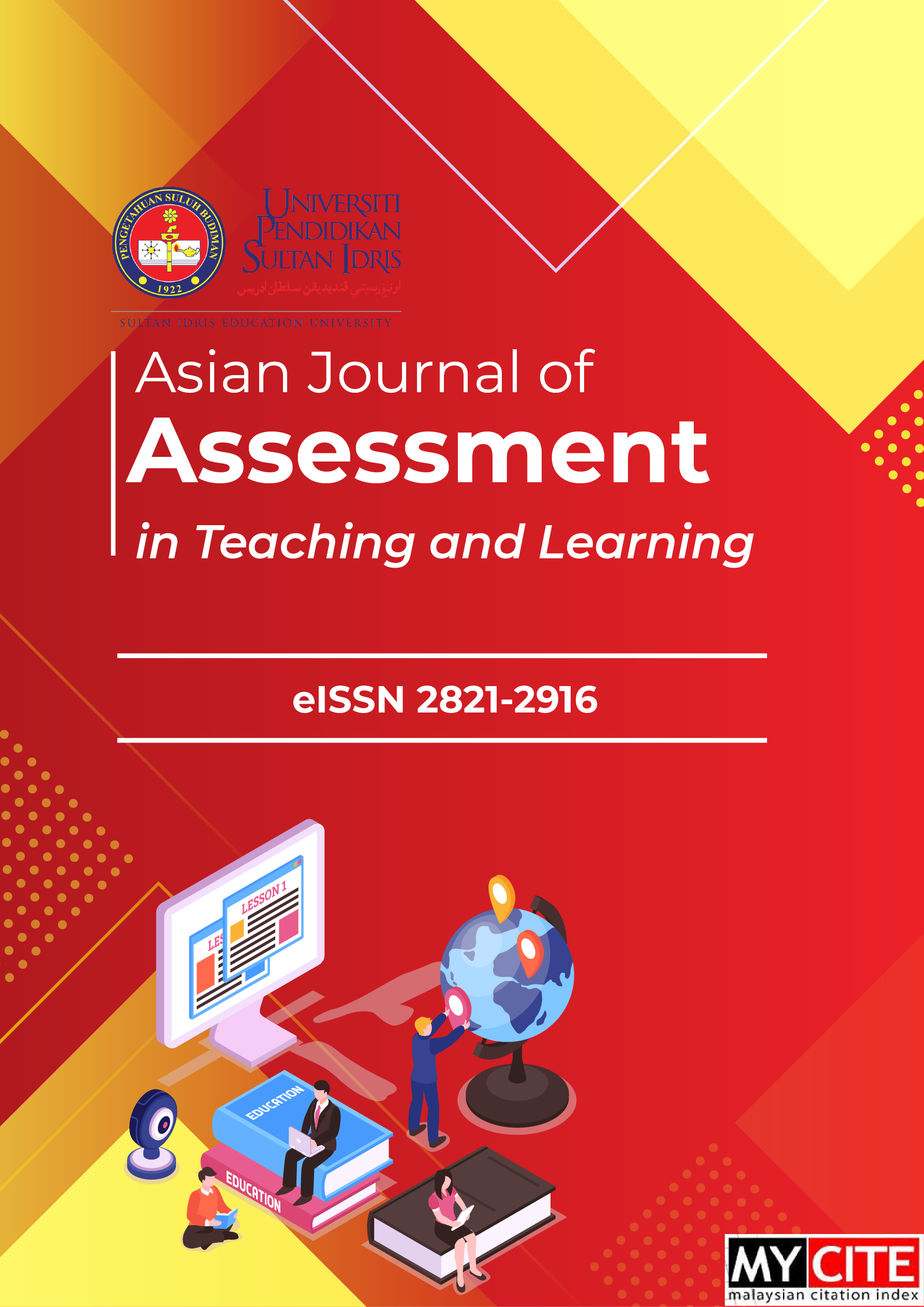The implementation of school-based management in public elementary schools
DOI:
https://doi.org/10.37134/ajatel.vol9.no1.5.2019Keywords:
School-Based Management, implementation, evaluation, school headsAbstract
This study was intended to evaluate the implementation of School-Based Management (SBM) in Alfonso Lista District 1 and District 2, Division of Ifugao through formative evaluation. The Stufflebeam’s Context, Input and Process (CIP) model was used to evaluate the implementation of SBM. Mixed Methods of Research (MMR) design was utilized. Triangulation of data through the use of data analysis, questionnaires, face-to-face interviews and focus group discussions (FGD) were employed. Mean rating and thematic approach were used to determine the extent of SBM and elaborated based on themes. The results showed that there was a moderate attainment of school objectives and the operational aspects of SBM were not fully implemented by the school heads. Results of the study showed that the strengths of the implementation are categorized in two discrete yet dominating themes: the value of cooperation and motivation; and the worth of collaboration and delegation. Correspondingly, the two major breakdowns of the communal description as regards the weaknesses of the implementation which includes the poor enactment of transparency and low value of support mechanism. With regard to the remedial measures on issues or problems, three underlying and dominant themes were revealed: consultative meeting, administrative protocol and open communication and decision making as the heart of the organization. A policy implication is then put forward since SBM accounts for four major principles or domains. This calls for the decentralization of authority which originally comes from the school head who solely and directly implements SBM to the operation relegated to teachers managing their respective domains such as: leadership and governance; curriculum and learning; accountability and continuous improvement; and management of resources based on their qualifications or skills. In doing such, devolution or a dispersed authority builds on teachers who are more directly involved with the beneficiaries like the pupils and their parents.
Downloads
References
Anderson, C., & Limerick, B. (2006). Female Administrators and School-Based Management: New Models in an Era of Change? Education Management &Administration, 27(4), 401-414.
Banicky, G. L., Rodney H.C. & Foos, G.D. (2000). Local Responses to School‐Based Management in Hong Kong. Educational Studies, 32(2), 171-185.
Barrera-Osorio, F., Fasih, T., Patrinos, H.A, & Santibáñez, L. (2009). Decentralized Decision- Making in Schools: The Theory, Concepts, Impressions and Evidence on School-Based Management (SBM). Washington: The World Bank.
Brady, H, (2008). School-Based Management (SBM) as a Factor in School Effectiveness. International Review of Education, 44(4), 319-333.
Billger, S.H. (2007). The Effects of School-Based Management on The Work life of Elementary Teachers: A Case Study. Unpublished Thesis. University of North Florida.
Bullock, A. (2011). Evalutaion and Study of Devolution of the School Manager and Decentarlization London: Routledge. Retrieved on January 13, 2018
Caldwell, B. J. (2005). School-Based Management (SBM) Retrieved November 2017, from Education Policy Series
Crum, K.S., & Sherman, W.H. (2008). Facilitating high achievement: High school principals' reflections on their successful leadership practices. Journal of educational administration, 46(5), 562-580.
Cruz, P. T. (2010). School-Based Management (SBM) Transparency. Forum Magazine, 43(2), 35-38.
Dempster, N. (2000). Guilty or not: The Impact and Effects of Site-Based Management on schools. Journal of Educational Administration, 38(1), 47-63.
DepEd. (2006). Operations Manual on School-Based Management (SBM) and its Support Systems. January 9, 2006. Pasig City: Department of Education.
Flanagan, F.K. (2000). EFL Teachers’ Perception of University Students’ Motivation and ESP Learning Achievement. Journal of Education, Values and Practice, 7(14), 28-37.
Gardner, M.A. (2014). The Examples of Current Issues in the Multicultural Classroom. Journal of Education and Practice, 6(10), 86-89.
Gertler, P.J., Patrinos, H.A., & Rubio-Codina, M. (2006). Empowering Parents to Improve Education: Evidence from Rural Mexico. Impact Evaluation Series Number 4. World Bank Policy Research Working Paper 3935.
Gropello, E.D. (2006). A Comparative Analysis of School-Based Management (SBM) in Central America. The International Bank for Reconstruction and Development. Washington: The World Bank.
Harmer, G.H. (1988). Looking Deeper than the Gradebook: Assessing Cultural Diversity Attitudes among Undergraduates. Journal of Scholarship of Teaching and Learning, 12(3), 142-164.
Keany, M. & Mundia, L. (2014). Foreign Language Learner’s Motivation and Its Effect on their Achievement: Implications for Effective Teaching of Students Studying in Japan at University Brunei Darussalam. International Education Studies, 7(9), 122-135.
Lee, V. E. (2001). The Key Elements of a Successful School-Based Management Strategy. School Effectiveness and School Improvement, 14 (3), 351-372.
Lee, V. E., & Smith, J. B. (2001). Restructuring High Schools for Equity and Excellence: What Works? Who does? Harvard Educational Review, 71(4), 766-67.
Leithwood. K., & Menzies T. (1998). A Review of Research Concerning the Implementation of Site-Based Management. School Effectiveness and School Improvement, 9(33), 233-285.
Leithwood, K., & Riehl, C. (2005). What do we already know about educational leadership. A new agenda for research in educational leadership. New York: Teachers College Press.
Lindberg E., & Vanyushyu, Y. (2013). Do Community-Managed schools work? An Evaluation of El Salvador’s EDUCO Program. Working paper No. 8, series on Impact Evaluation of Education Reforms, Development Economics Research Group, The World Bank.
Meyer, D (1996). Multilingualism and Multiculturalism in the Swedish-Medium Primary School Classroom in Finland - Some Teacher Views. International Electronic Journal of Elementary Education, 6(1), 117-136.
Nidhi, K., Cristina, L., & Shreyasi, J. (2012). The Effects of School-Based Management in the Philippines: An Initial Assessment using Administrative Data. Journal of Development Effectiveness, 4 (2), 277-295.
Smith, J.B. (2014). Restructuring High Schools for Equity and Excellence: What Works? Who does? Harvard Educational Review, 71(4), 766-67.
William, M. T. (2012). Implementing School-Based management. School Effectiveness and Usefulness, 15(14), 154-159.
World Bank (2012). The Effects of School-based Management in the Philippines: An Initial Assessment Using Administrative Data. Policy Research Working Paper Series No. 5248. East Asia Education Sector Unit, Independent Evaluation Group and the World Bank Institute.
Downloads
Published
Issue
Section
License
Copyright (c) 2019 UPSI Press

This work is licensed under a Creative Commons Attribution-NonCommercial-ShareAlike 4.0 International License.





